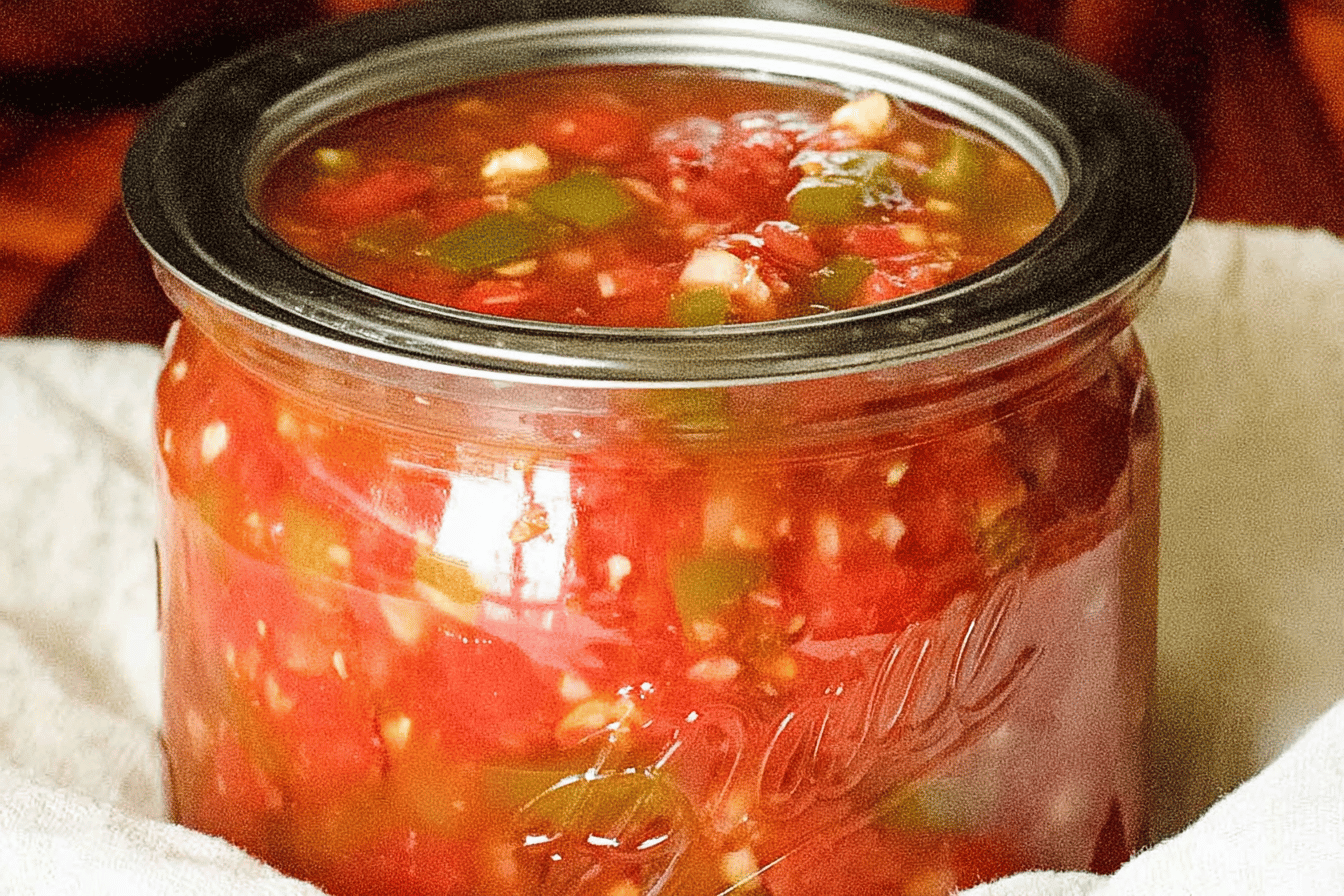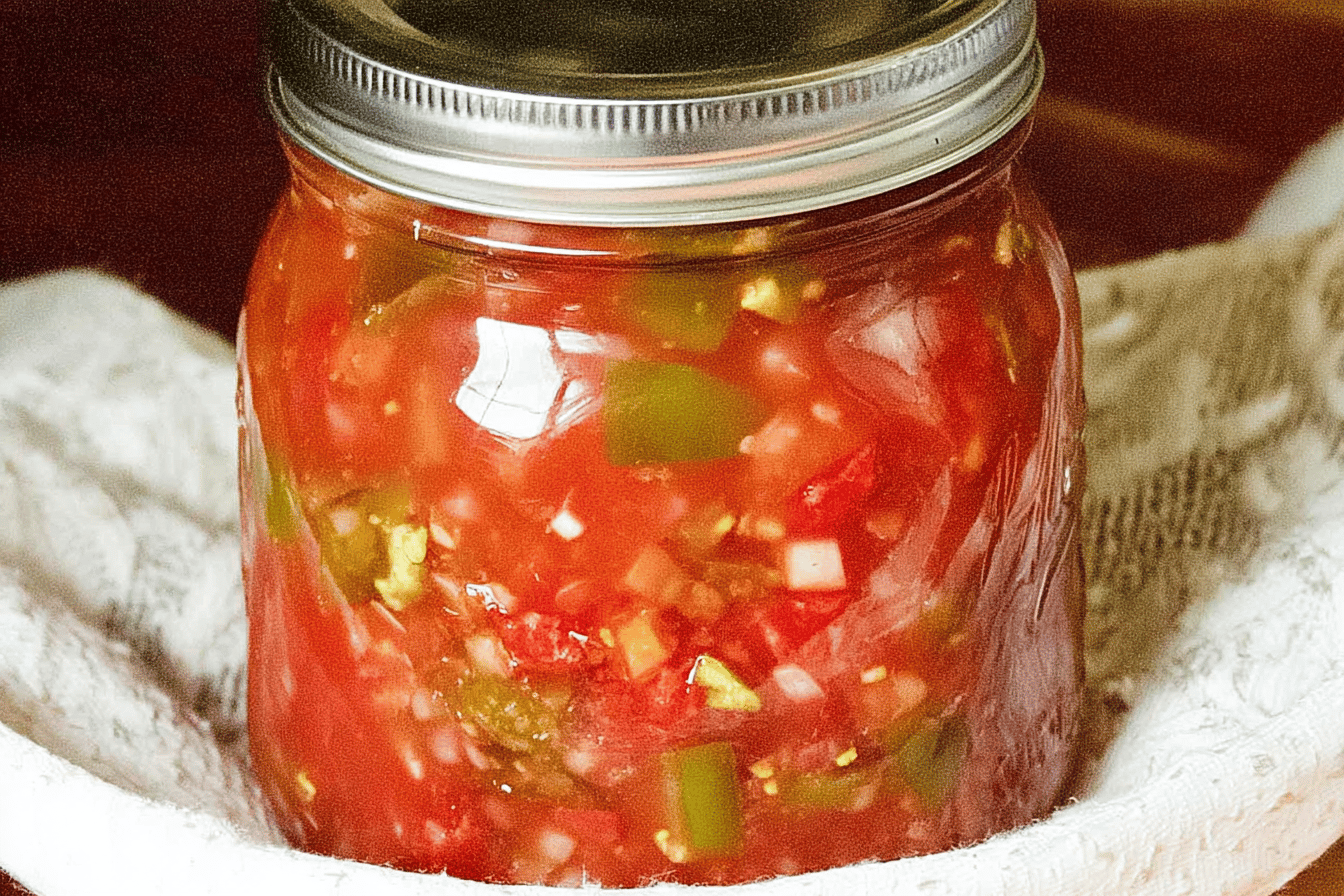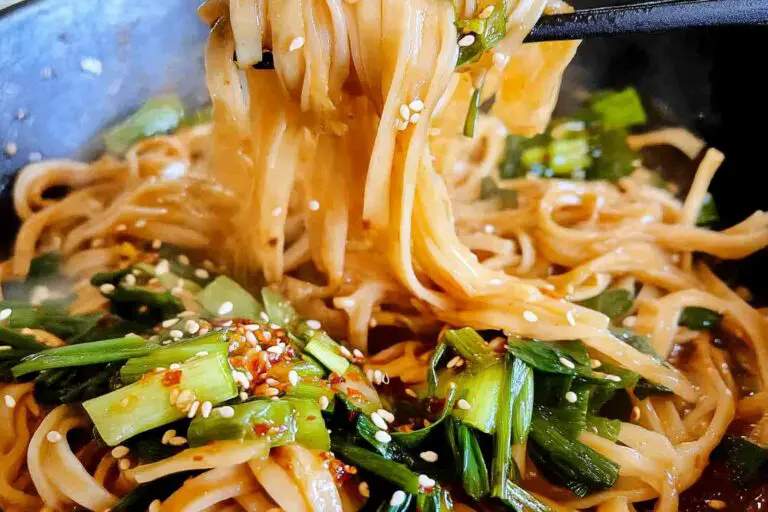Homemade Canning Salsa
Introduction
If you’re searching for a flavorful, homemade salsa recipe that is perfect for canning, look no further. This homemade canning salsa is a versatile and delicious condiment that takes advantage of fresh, ripe ingredients for the ultimate homemade flavor. Whether you’re planning to stock up your pantry or share some with friends, this recipe is sure to be a hit.
Detailed Ingredients with Measures
To prepare this canning salsa, you will need:
– Fresh tomatoes
– Green peppers
– Jalapeno peppers
– Yellow onions
– White vinegar
– Tomato paste
– Granulated sugar
– Table salt
– Garlic powder
– Ground cumin
– Fresh cilantro
With these simple and fresh ingredients, you can create a salsa that tastes better than any store-bought option.
Prep Time
The preparation process involves chopping, dicing, and mixing the ingredients together. Allow ample time for washing and prepping the vegetables to maintain their fresh flavors. Precise prep work ensures your salsa turns out just right.
Cook Time, Total Time, Yield
Once your ingredients are prepared, the cook time is key to blending the flavors together perfectly. Simmer your salsa for the recommended duration, ensuring it reaches the perfect consistency. Summing up the prep and cook time gives you a total time commitment, but the delicious final result makes it worth every minute. As for the yield, this recipe produces plenty of salsa to enjoy now and save for later through canning.
“`html
Detailed Directions and Instructions
Step 1: Prepare the Jars
Sterilize your canning jars by washing them with warm, soapy water. Rinse thoroughly and place them in a boiling water bath or dishwasher on high heat to sanitize. Keep jars warm until ready to use to prevent them from cracking when filled with the hot salsa.
Step 2: Prepare the Lids
Place the canning lids in a small saucepan filled with water. Heat them over low heat, but avoid boiling. Let them stay warm until ready to use.
Step 3: Roast the Tomatoes
Preheat your oven to 425°F. Spread the washed and halved tomatoes, cut side down, on a baking sheet lined with parchment paper. Roast them in the oven for about 30 minutes or until the skins begin to shrink and blister slightly.
Step 4: Peel the Tomatoes
Once roasted, let the tomatoes cool slightly. Peel off the skins; they should come off easily. Set the peeled tomatoes aside in a large mixing bowl.
Step 5: Prepare the Vegetables
Dice the onions, peppers, and garlic as specified in the recipe quantities. Keep them in separate containers, and use gloves when handling hot peppers to avoid irritation.
Step 6: Combine the Salsa Ingredients
Add the roasted and peeled tomatoes to a large saucepan or stockpot. Stir in the diced onions, peppers, and garlic. Add the vinegar, salt, sugar, and specific spices listed in the recipe.
Step 7: Cook the Salsa
Bring the salsa mixture to a boil over medium-high heat, then reduce to a simmer. Stir frequently and let the salsa cook for about 10 minutes to allow flavors to meld.
Step 8: Fill the Jars
Using a clean funnel, carefully ladle the hot salsa into the prepared jars, leaving about 1/2 inch of headspace at the top. Wipe the rims of the jars with a clean, damp cloth to ensure a good seal.
Step 9: Seal the Jars
Place the warmed lids onto each jar, followed by the bands. Tighten the bands until they are just snug.
Step 10: Process the Jars in a Water Bath
Place the filled jars into a water bath canner, ensuring they are completely submerged in water. Bring the water to a boil and process the jars according to the specified time for your altitude. This typically ranges between 15-20 minutes.
Step 11: Remove and Cool the Jars
Once processing time is complete, carefully remove the jars from the water bath using jar lifters. Place them on a towel-lined surface and allow them to cool for 12-24 hours.
Step 12: Check the Seals
Once cooled, check the jar lids to ensure they are sealed. Press down on the center of the lid; if it does not pop back, the jar has sealed properly. Remove the bands and store jars in a cool, dark place.
Notes
Note – Roasting the Tomatoes
Roasting the tomatoes enhances the flavor and makes peeling the skins much easier. It is a step worth including for a richer salsa taste.
Note – Preparing Peppers
If you prefer a milder salsa, remove the seeds and membranes of the peppers before chopping. For spicier salsa, leave the seeds intact or increase the amount of hot peppers.
Note – Acidity
The vinegar in the recipe is essential for safe canning and helps maintain the correct acidity level. Do not reduce or replace this ingredient.
Note – Jar Sterilization
Properly sterilized jars are critical for safe canning. Skipping this step may result in the growth of harmful bacteria.
Note – Storage
Canned salsa can be stored for up to one year in a cool, dark, and dry location. Always check the seal before consuming.
Note – Customization
Feel free to adjust spices and ingredients to suit personal taste, but do not alter the vinegar quantity or eliminate it for canning safety.
“`
Cook Techniques
Proper Preparation of Ingredients
Ensure all ingredients are washed thoroughly and chopped evenly. This will help maintain consistency in texture and flavor during the cooking and canning process.
Blanching Tomatoes
Blanch tomatoes by briefly boiling them, then transferring them to ice water. This makes peeling the tomatoes much easier and ensures a better salsa texture.
Using Fresh Vegetables
Opt for fresh, ripe vegetables such as tomatoes, onions, and peppers to enhance the overall taste and quality of the salsa.
Controlling Spice Levels
Adjust the amount of peppers to control the salsa’s spice level. Removing or leaving seeds in the peppers can further increase or decrease the heat.
Simmering for Proper Consistency
Allow the salsa to simmer gently until it reaches the desired thickness. Avoid overcooking to retain some chunkiness.
Safe Canning Techniques
Always sterilize jars and lids before use. Process the cans in a boiling water bath to ensure proper safety and long-term storage.
Leaving Proper Headspace
When filling jars with salsa, leave adequate headspace to allow for proper sealing during the canning process.
Instant Flavor Adjustments After Cooking
After simmering, taste the salsa and adjust the seasoning before canning. Add salt, sugar, or lime juice as needed.
FAQ
Can I use canned tomatoes instead of fresh?
Fresh tomatoes are recommended for the best flavor and consistency, but canned tomatoes can be used in a pinch if fresh are unavailable.
How can I make the salsa less spicy?
To lessen the heat, use fewer peppers or choose mild varieties. Removing seeds and membranes from the peppers can also reduce spice levels.
How long can I store canned salsa?
When properly canned and stored in a cool, dark place, homemade salsa can last up to a year.
Do I need to sterilize the jars before canning?
Yes, sterilizing jars and lids is crucial to prevent contamination and ensure food safety.
Can I add more vegetables or other ingredients?
It’s important to follow tested recipes for canning to ensure safety. Adding extra or inappropriate ingredients can alter acidity levels and may compromise safety.
What is the best way to peel tomatoes?
Blanching tomatoes is the most effective method. Boil them briefly, then transfer to ice water. The skins will slip off easily.
Is a pressure canner necessary for salsa?
No, a boiling water canner is sufficient for canning salsa as long as the recipe’s acidity levels are balanced for safety.
Can I freeze the salsa instead of canning it?
Yes, salsa can be frozen in airtight containers or freezer bags if you prefer not to can it. However, the texture may change slightly after thawing.
How do I know if the jars have sealed properly?
After cooling, press down on the center of the lid. If it does not pop back up, the jar is sealed. If the lid pops, it didn’t seal correctly and should be refrigerated or reprocessed.

Conclusion
Homemade canning salsa is a versatile and flavorful recipe that you can easily customize to suit your taste. This recipe is ideal for preserving the taste of fresh garden vegetables, making it a perfect addition to your pantry. With careful preparation and proper canning techniques, this salsa can be enjoyed throughout the year whether as a dip, a cooking ingredient, or a topping for your favorite dishes.
More recipes suggestions and combination
Roasted Tomato Salsa
Enhance the smoky flavor by roasting the tomatoes and other vegetables before preparing the salsa.
Pineapple Mango Salsa
Add a tropical twist by combining the salsa recipe with fresh diced pineapple and mango.
Spicy Black Bean Salsa
Pair this salsa with black beans, corn, and a hint of lime for a hearty variation.
Avocado Salsa
Mix in chunks of fresh avocado for a creamy and refreshing addition to your salsa.
Fresh Garden Salsa
Prepare a raw version of the recipe by skipping the cooking process and using all fresh ingredients.
Tomatillo Salsa Verde
Replace the tomatoes with tomatillos for a tangy green salsa that’s perfect with tacos or enchiladas.
Chipotle Salsa
Incorporate chipotle peppers for a smoky and spicy variation that pairs well with grilled dishes.
Strawberry Jalapeño Salsa
Combine strawberries and jalapeños for a sweet and spicy combination that works well with chips or grilled chicken.
Corn and Zucchini Salsa
Include fresh corn and zucchini for a summertime twist on the classic salsa recipe.







